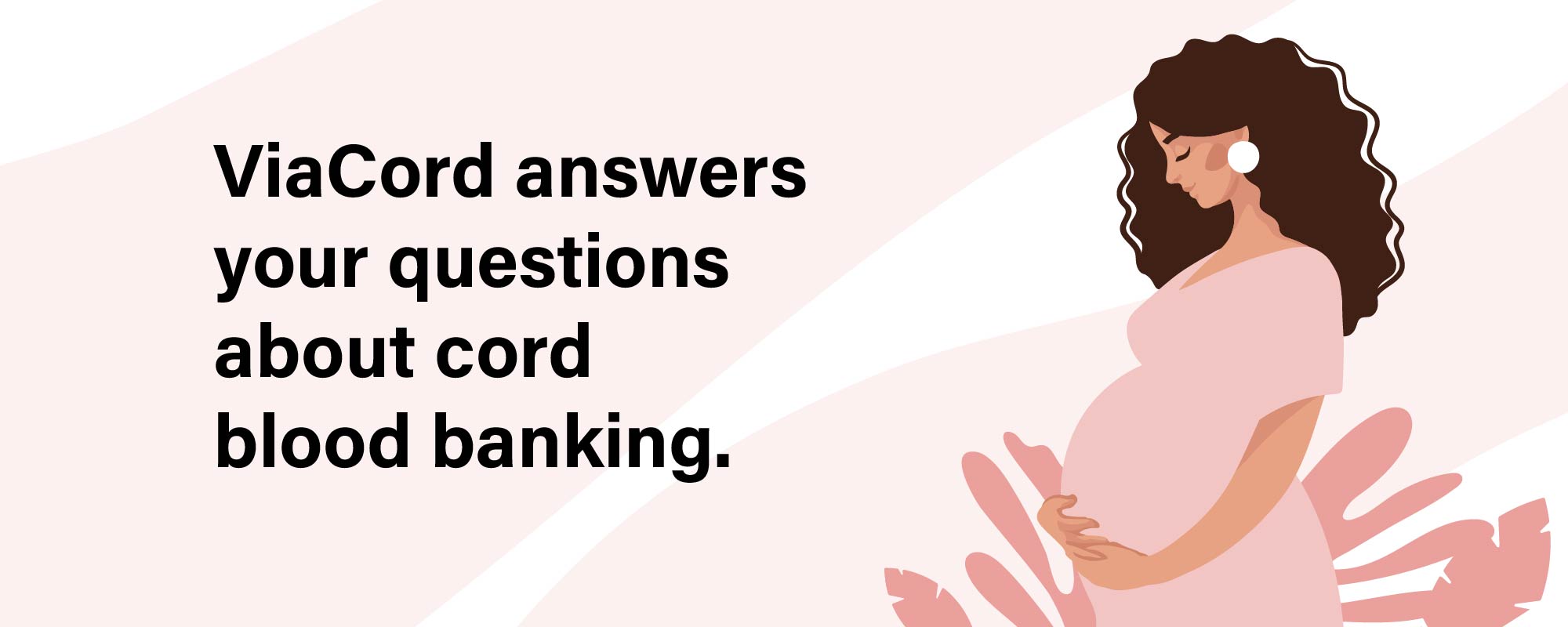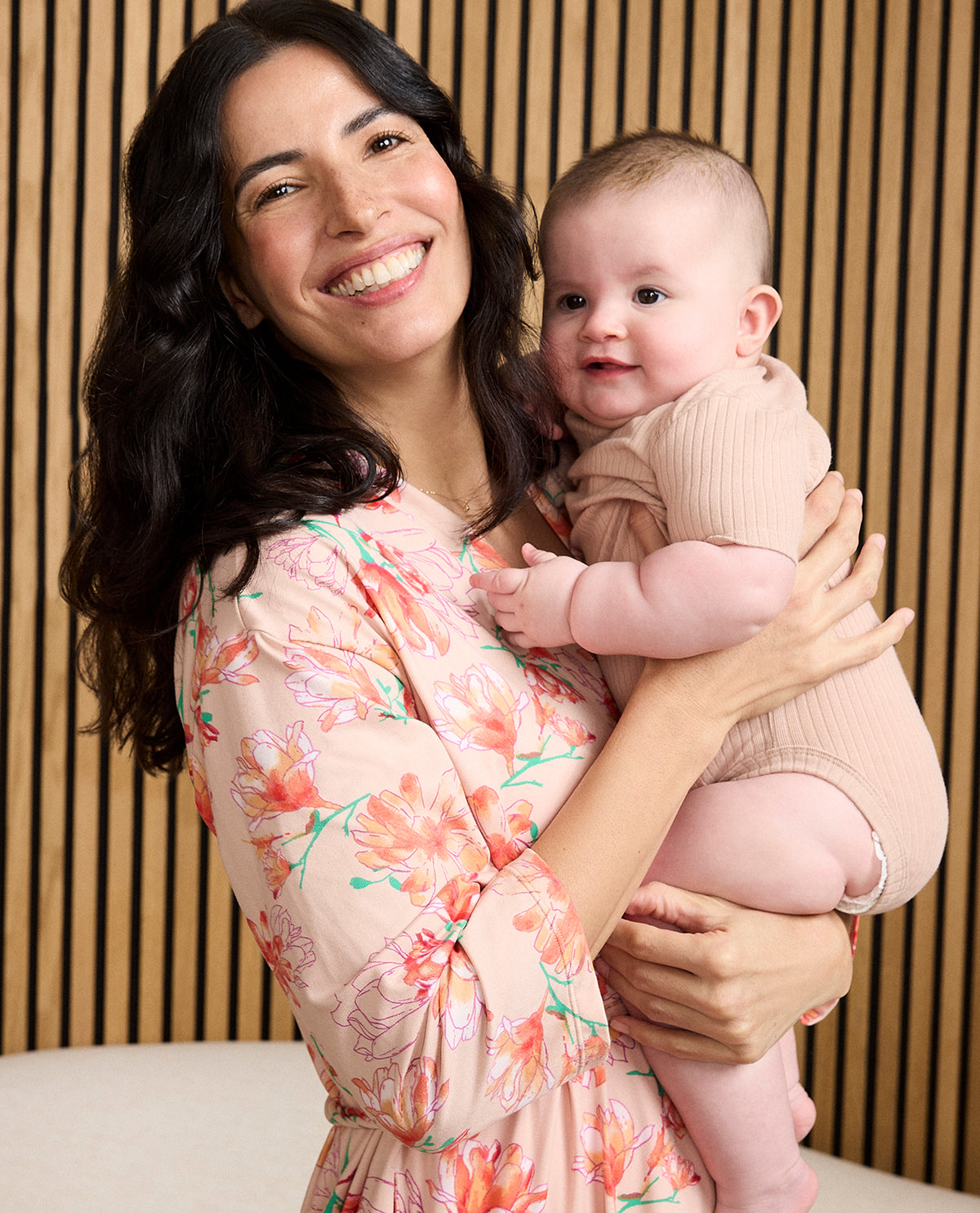Kate Girard is the Director of Medical and Scientific Affairs at ViaCord – a stem cell bank & an industry leader for over 30 years. Kate has been in the cord blood industry for almost twenty years, and her role focuses on the clinical use of cord blood as well as research & development. To watch or full interview with Kate, click here: Motherhood Maternity YouTube Channel
Q: Can you describe what cord blood banking is? What's the difference between a private and public storage method?
A: Cord blood banking is the process of collecting and storing blood that's left over in the umbilical cord after the baby is born. After birth, there's residual blood that has valuable cells in it. After the blood is collected through a simple procedure, it’s sent to a facility where it’s processed, stored, and kept safe in a bank for future use. The amount of blood collected is highly variable with no guarantee of how much you’re going to get. Some umbilical cords are tiny, short & skinny, whereas others are thicker and very long. These factors will affect the total amount of blood collected.
There are different formats for banking: public or private. Public banking is when cord blood is donated after delivery to a public facility where it’s tested and stored for public use. Once donated the family no longer has rights to it. Private banking is when a family stores the cord blood for their future use only, owning all rights to it.
Q: How does one donate to a public bank? What about a private bank?
A: To donate to a public bank you have to deliver at a hospital that has a relationship with a public bank. Research prior to delivery is needed to see if the hospital where you plan to deliver has a public donation program Private banking can be facilitated and performed anywhere, whether you’re in a hospital or at home. The family will need to enroll with a private bank in advance and make sure they communicate that they are doing cord blood banking and discuss with the medical staff.
Q: Say, I had a child who needed the cord blood after public donation, do they still have access to it in a public bank?
A: Technically, no. When you donate cord blood to a public bank, you are relinquishing your rights to it. I can’t say it would be impossible to get it back if it was stored, but that’s not how public banks are set up.
Q: Can you give us background information on cord blood banking: when did this first start and why?
A: The cord blood banking industry was born after the first cord blood transplant. Bone marrow transplants had been around for decades, scientists realized there are stem cells within umbilical cord blood that are the same as what you find in bone marrow. In 1988, the first successful sibling cord blood transplant occurred.
Q: How many people have decided to bank their cord blood, either privately or publicly?
A: In the private banks alone, I know there's over one million, and that number is constantly changing. The public system is different. It is not necessarily beneficial to have the largest bank in the world, but the most diverse. When you're using cord blood stem cells clinically, they need to match. You can't put just anyone's cells into somebody else’s body. A public system tries to have a diverse and broad bank so anyone coming to that registry would be able to find a match. This matching is based on HLA type, not blood type ( A, B O +/- )
Q: After banking privately, can you make a decision to donate it to a public bank instead?
A: If you banked your cord blood privately, you’re not able to then change it to a public registry. There’s a different set of regulations that’s used for public and private banking. Now, if families decide they no longer want to privately bank, they do have options to donate for research.
Q: How is cord blood stored and for how long?
A: It's stored frozen using a very technically sound method that's been well validated and around for years. It’s an exact science on how to ensure that once the cells are frozen, they will be viable. That’s the most important part. There's no evidence of an expiration date because if you freeze them correctly, time essentially stops for those cells. There’s extensive research to show that time isn’t the thing that matters, it’s the expertise in processing and freezing counts.
Q: Are there differences in the process if you had a C-section versus a natural vaginal birth?
A: The collection process is the same for both, the setting is just different, and the collection is always at the medical discretion of your obstetric care provider. The materials provided for the cord blood collection are sterile and can be used in both the vaginal and c-section setting.
Q: What are the benefits?
A: This is a once-in-a-lifetime opportunity. It’s an opportunity to capture pristine cells that are easily accessible. These cells could prove to be an invaluable medical resource for your family in the future. The process of draining blood into a bag is much simpler than a bone marrow harvest . Another benefit has to do with matching. If you’re going to use the cells clinically, specifically for transplant, having matching cells is important. The best place to find a match is within your family because of shared genes. Having a source in the bank that’s already been processed can be called upon right away for use.
Q: If my parents decided to bank my cord blood, would it be guaranteed those cells would be a match for me? What about matching for siblings? When would I want to use my siblings over my own?
A: Yes, if it's my umbilical cord blood, it's going to match me. When it comes to siblings 25% of the time it's an exact match, about 50% of the time it's a partial match, and 25% of the time it's not going to match at all. If I have a genetic blood disorder, I’m not going to want to use my own stem cells. So, in certain situations, you’d want to use a sibling’s cord blood for a transplant over your own.
Q: What factors might tie into a parent's decision to decide to bank [KG1] cord blood?
A: Every family is unique. The most common theme we hear is therapeutic potential. In other words, what do they think cord blood can be used for? We know cord blood can be used for a “bone marrow” transplant now called a stem cell transplant, and that's kind of the bedrock of the cord blood banking industry today. A lot of families decide to bank because of future potential and family history. There are a lot of things unique to a family that may motivate them to say, you know what, I think my family is at higher risk than average, and I want to make sure that we have this resource banked for that child or other members of the family.
Q: Are you able to elaborate on what some of those risks are?
A: In the transplant setting, there are nearly 80 different conditions where a transplant is a potential therapeutic option, including certain types of cancers. Other risks include hemoglobinopathies, immune deficiencies, and bone marrow failure syndromes. If they are aware that such conditions happened in the family before, and if that's a risk for them going forward, that might motivate them to consider this.
Q: What else can cord blood help treat?
A: In the past decade or so, the scientific community has started to look at cord blood cells for treating things outside of transplants. Clinical trials have looked at the use of blood in cerebral palsy and autism. It’s really exciting to see the scientific community studying if we can take these cells that are readily available to every person for everyone, get a cord, and see if we can use them to benefit people with other types of challenges in the neurologic space, not just in the blood and immune space.
Q: Is there anything else you would like to add about cord blood banking?
A: People using transplants are very ill, whereas with this, they're using the cord blood cells to rebuild that person's blood and immune system.
Q: When you're ill, as you said, it's a bigger kind of procedure whereas with clinical trials for other uses it is more simple treatment?
A: Transplant and regenerative medicine are very different. With a transplant procedure, they’re basically destroying the patient’s bone marrow and then bringing in donor stem cells, which are going find their way into the bone marrow of the patient, and build out new blood and immune system for the patient. You’re now walking around with someone else’s healthy blood and immune system. Current trials for other regenerative medicine uses are infusions of the cells into a patient without any pre- conditioning of the bone marrow, and the cells are not intended to replace the blood or immune system, but may potentially play a more transient role to treat the intended condition.
Q: Is there a limit to how many times you could use cord blood banking? Do you have to use your entire bag at one time or are they able to kind of section it out and use it?
A: The ability to use it one time or multiple times depends on what you're using it for. If you’re using the cord blood for a transplant, they will use the entire thing every single time. To use seeds as an analogy for stem cells, if you’ve devastated someone's blood and immune system and you’re putting in new cells to grow out a healthy, functional system, you want to give them as many seeds as possible. Now, when we bank cord blood, we do bank in a format that’s a five-compartment bag. We're trying to provide flexibility for the future if there are later treatments that do not require the use of all the banked cells
Q: Is there a limit of how many times you can use public cord blood banking?
A: There’s not a limit. The public system is there for everybody, and the cord blood inventory is part of that searchable system. If I'm a doctor and I have someone who needs a transplant, I'm going to consider all the stem cell options; search of public registry, do they have a family member who's a match for a bone marrow donor? Do they have cord blood banked? You're taking all the different things into consideration and trying to decide what's the best for that patient.
Q: You said there's only certain hospitals that do public banking. Do you see that expanding in the future?
A: The public system is very valuable program. It is a supply and demand system. A public bank needs to take in a certain number of units and process them to make up their inventory. It's like a library. You want to have a book for everybody. The goal is to be able to find a match for any patient in need they need to have an incredibly diverse library of units that are banked. It costs a fair amount of money to do so, and that is balanced by the number of units that get selected for clinical use. I don't see a lot of growth in the public system right now.
To learn more about ViaCord, go to their website: www.viacord.com.
To get special offers from them, sign up for our Preggie Perks!
To watch or full interview with Kate Falcon Girard, click here: Motherhood Maternity YouTube Channel

Motherhood Loves Selects signifies a product or service that brings joy, offers practical solutions, and provides invaluable support to the strongest people in the world: moms. ViaCord is awarded this honor for their advancements, accreditation, comprehensive services, and passion for the health and personal wellness of our community.








